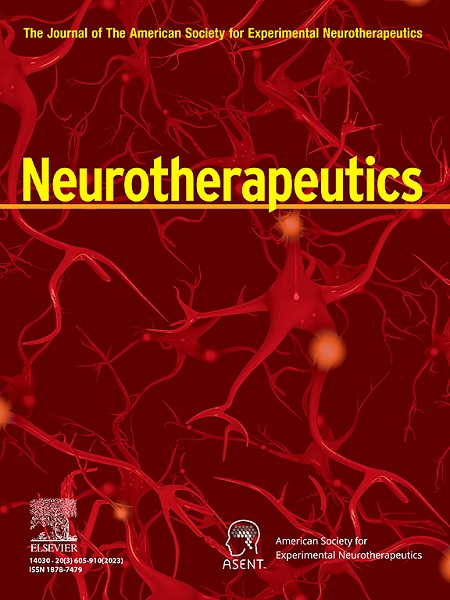周末战士 "体育锻炼与神经退行性疾病发病率之间的关系。
IF 6.9
2区 医学
Q1 CLINICAL NEUROLOGY
引用次数: 0
摘要
虽然指南建议每周进行 150 分钟的中度到剧烈运动(MVPA)以增强体质,但将这些活动集中在一周中的 1-2 天,即 "周末战士"(WW)模式,是否对神经退行性疾病(NDDs)有同样的益处,目前仍不清楚。本研究旨在评估 "周末战士 "模式与 NDDs 风险之间的关联。这项前瞻性研究使用了英国生物库中 2013 年 6 月至 2015 年 12 月期间基于加速计的整周体力活动数据。这些人被分为不同的体力活动模式,包括WW模式(即在1-2天内达到推荐MVPA的50%或75%以上)、常规模式和非活跃模式。采用 Cox 比例危险模型评估体力活动模式与结果之间的关系。与不活动组相比,WW 模式和常规模式同样与全因痴呆风险降低有关(WW:危险比 [HR]:0.68,95% 置信区间 [CI]:0.56-0.84; regular:HR:0.86,95% CI:0.67-1.1)和全因帕金森病(WW:HR:0.47,95% CI:0.35-0.63;常规:HR:0.69,95% CI:0.5-0.95)。当运动阈值提高到 MVPA 的 75% 时,这两种模式仍与全因痴呆症(WW:HR:0.61,95% CI:0.41-0.91;常规:HR:0.76,95% CI:0.63-0.92)和全因帕金森病(WW:HR:0.22,95% CI:0.10-0.47;常规:HR:0.59,95% CI:0.46-0.75)的发病风险降低相关。将推荐的体育活动集中在每周 1-2 天进行与 NDD 的发病率较低有关。本文章由计算机程序翻译,如有差异,请以英文原文为准。
Association between “weekend warrior” physical activity and the incidence of neurodegenerative diseases
While guidelines recommend 150 min of moderate to vigorous physical activity (MVPA) weekly to enhance health, it remains unclear whether concentrating these activities into 1–2 days of the week, “weekend warrior” (WW) pattern, has the same benefit for neurodegenerative diseases (NDDs). This study aimed to evaluate the associations of WW pattern and the risk of NDDs. This prospective study was conducted using accelerometer-based physical activity data for a full week from June 2013 to December 2015 in the UK Biobank. These individuals were categorized into distinct physical activity patterns, including the WW pattern (i.e., over 50% or 75% of recommended MVPA achieved over 1–2 days), regular pattern, and inactive pattern. Cox proportional hazards model was used to evaluate the association between physical activity patterns and outcomes. Compared to inactive group, WW pattern and regular pattern was similarly linked to a reduced risk of all-cause dementia (WW: Hazard Ratio [HR]: 0.68, 95% Confidence Interval [CI]: 0.56–0.84; regular: HR: 0.86, 95% CI: 0.67–1.1) and all-cause Parkinsonism (WW: HR: 0.47, 95% CI: 0.35–0.63; regular: HR: 0.69, 95% CI: 0.5–0.95). When the exercise threshold was increased to 75% of MVPA, both patterns still were associated with decreased risk of incident all-cause dementia (WW: HR: 0.61, 95% CI: 0.41–0.91; regular: HR: 0.76, 95% CI: 0.63–0.92) and all-cause Parkinsonism (WW: HR: 0.22, 95% CI: 0.10–0.47; regular: HR: 0.59, 95% CI: 0.46–0.75). Concentrating recommended physical activities into 1–2 days per week is associated with a lower incidence of NDDs.
求助全文
通过发布文献求助,成功后即可免费获取论文全文。
去求助
来源期刊

Neurotherapeutics
医学-神经科学
CiteScore
11.00
自引率
3.50%
发文量
154
审稿时长
6-12 weeks
期刊介绍:
Neurotherapeutics® is the journal of the American Society for Experimental Neurotherapeutics (ASENT). Each issue provides critical reviews of an important topic relating to the treatment of neurological disorders written by international authorities.
The Journal also publishes original research articles in translational neuroscience including descriptions of cutting edge therapies that cross disciplinary lines and represent important contributions to neurotherapeutics for medical practitioners and other researchers in the field.
Neurotherapeutics ® delivers a multidisciplinary perspective on the frontiers of translational neuroscience, provides perspectives on current research and practice, and covers social and ethical as well as scientific issues.
 求助内容:
求助内容: 应助结果提醒方式:
应助结果提醒方式:


